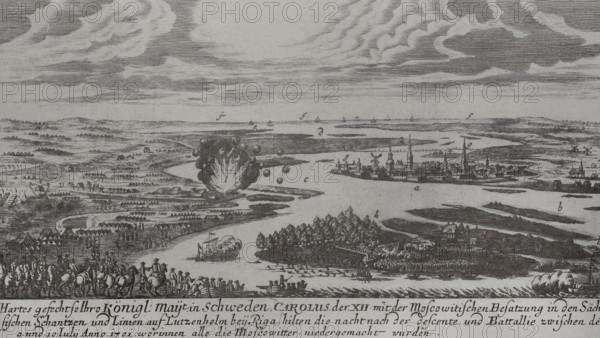
Légende
Great Northern War (1700-1721). Conflicts that took place over supremacy in the Baltic Sea. Rivalry between Sweden, dominant in northern Europe, and Russia, Denmark-Norway and the Republic of the Two Nations caused these three states, together with Saxony, to form an anti-Swedish coalition in 1700. Battle of Daugava or Battle of Spilve (9 July 1701). The army of King Charles XII of Sweden attacked the fortifications of Lucavsala across the Daugava River, defeating the Russians. The text of the engraving reads: ""A fierce battle in which the Swedish King Charles XII defeated the Muscovites, who fortified themselves in the trench on the island of Lutzenholm, near Riga, after a battle on the night of 9-10 July 1701, in which all the Muscovites were destroyed"". Engraving by unknown artist based on a drawing by Johana Litena.
Date
28 juin 2018
Crédit
Photo12/UIG
Notre référence
UMG25A17_448
Licence
Droits gérés
Format disponible
26,1Mo (3,3Mo) / 34,1cm x 19,2cm / 4024 x 2267 (300dpi)